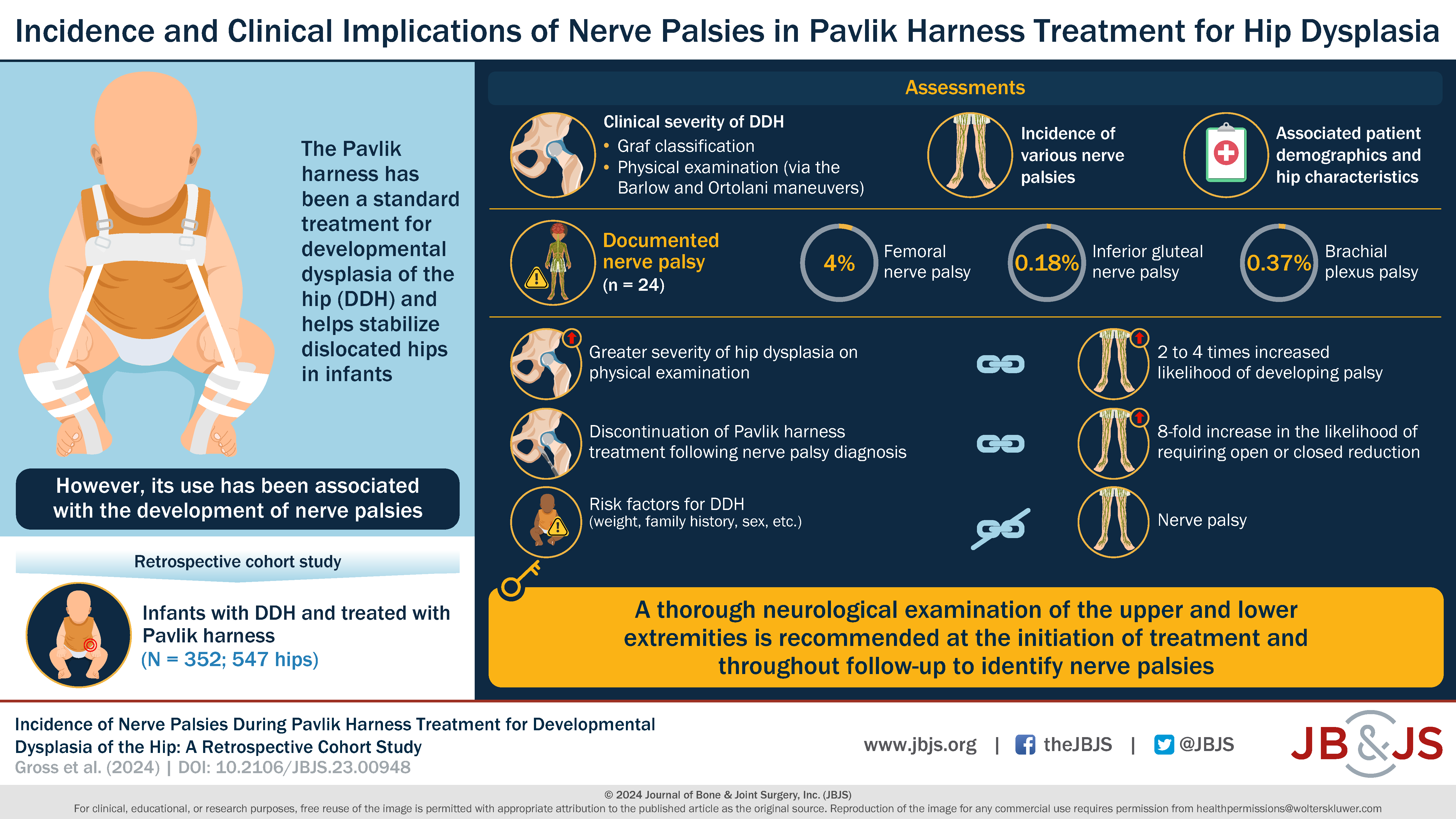What is the incidence of nerve palsy in infants undergoing Pavlik harness treatment for developmental dysplasia of the hip (DDH)? Dr. Matt Schmitz, JBJS Deputy Editor for Social Media, discusses a new study that explores this topic.
Pavlik harness treatment has been a mainstay for a century for the early nonoperative management of developmental dysplasia of the hip (DDH). Although frequently successful, treatment with a Pavlik harness is associated with potential complications, including nerve palsies.
In the current issue of JBJS, Gross et al. present the results of a retrospective cohort study in which they reviewed the incidence of various nerve palsies in infants during a 7-year period at the Hospital for Special Surgery in New York. They also evaluated whether patient demographics or hip characteristics were associated with nerve palsy. You can access the study and the downloadable infographic at JBJS.org:
Study Details
- 547 treated hips in 351 patients (56% bilateral)
- 83% of the patients were female.
- 24 (7%) of the patients had documented nerve palsy; 1 patient had bilateral nerve palsies.
- 22 cases of femoral nerve palsy
- 1 case of inferior gluteal nerve palsy
- 2 cases of brachial plexus palsy
The authors found that hips with a diagnosis of nerve palsy had more severe DDH, as measured by the Graf classification (p < 0.001). In particular, 52% of the hips in the cohort with nerve palsy were classified as Graf IV (the most severe dislocations), while only 27% of the cohort without palsy had Graf IV dislocations. In addition, hips with nerve palsies had more severe DDH as measured with the Barlow and Ortolani maneuvers (p = 0.003). Specifically, patients with Ortolani-positive hips (dislocated at rest) or fixed dislocations were 4.2 times more likely to develop nerve palsy than those with “clinically silent” dysplasia or Barlow-positive hips (dislocatable but reduced at rest).
In addition, patients for whom Pavlik harness treatment was discontinued because of a nerve palsy were 8 times more likely to require open or closed reduction of the hip (odds ratio, 7.9 [95% CI, 3.01 to 20.6]; p<0.001). Other risk factors analyzed by logistic regression, including laterality, sex, weight, and age, were not significant.
Although nerve palsies with Pavlik harness treatment of DDH are relatively rare, this information is important for counseling parents who can be overwhelmed with the diagnosis of DDH soon after the birth of their child. The authors note that palsies associated with Pavlik harness treatment “can be expected to resolve with a short break from treatment.” Nevertheless, knowing that more severe dislocations are associated with the potential for nerve palsy can help an orthopaedist keep an eye out for these complications and understand how they relate to the potential future management and success of conservatively managed DDH.
JBJS Deputy Editor for Social Media




